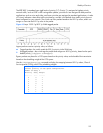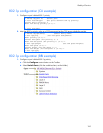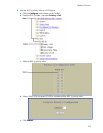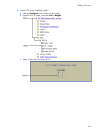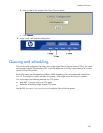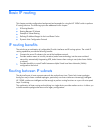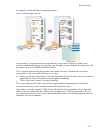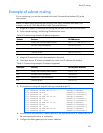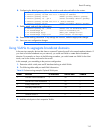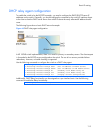
Basic IP routing
106
Basic IP routing
This chapter provides configuration background and examples for using the HP 10GbE switch to perform
IP routing functions. The following topics are addressed in this chapter:
• IP Routing Benefits
• Routing Between IP Subnets
• Example of Subnet Routing
• Defining IP Address Ranges for the Local Route Cache
• Dynamic Host Configuration Protocol
IP routing benefits
The switch uses a combination of configurable IP switch interfaces and IP routing options. The switch IP
routing capabilities provide the following benefits:
• Connects the server IP subnets to the rest of the backbone network.
• Provides another means to invisibly introduce Jumbo frame technology into the server-switched
network by automatically fragmenting UDP Jumbo frames when routing to non-Jumbo frame VLANs
or subnets.
• Provides the ability to route IP traffic between multiple Virtual Local Area Networks (VLANs)
configured on the switch.
Routing between IP subnets
The physical layout of most corporate networks has evolved over time. Classic hub/router topologies
have given way to faster switched topologies, particularly now that switches are increasingly intelligent.
HP 10GbE switches are intelligent and fast enough to perform routing functions on a par with wire speed
Layer 2 switching.
The combination of faster routing and switching in a single device provides another service—it allows you
to build versatile topologies that account for legacy configurations.




